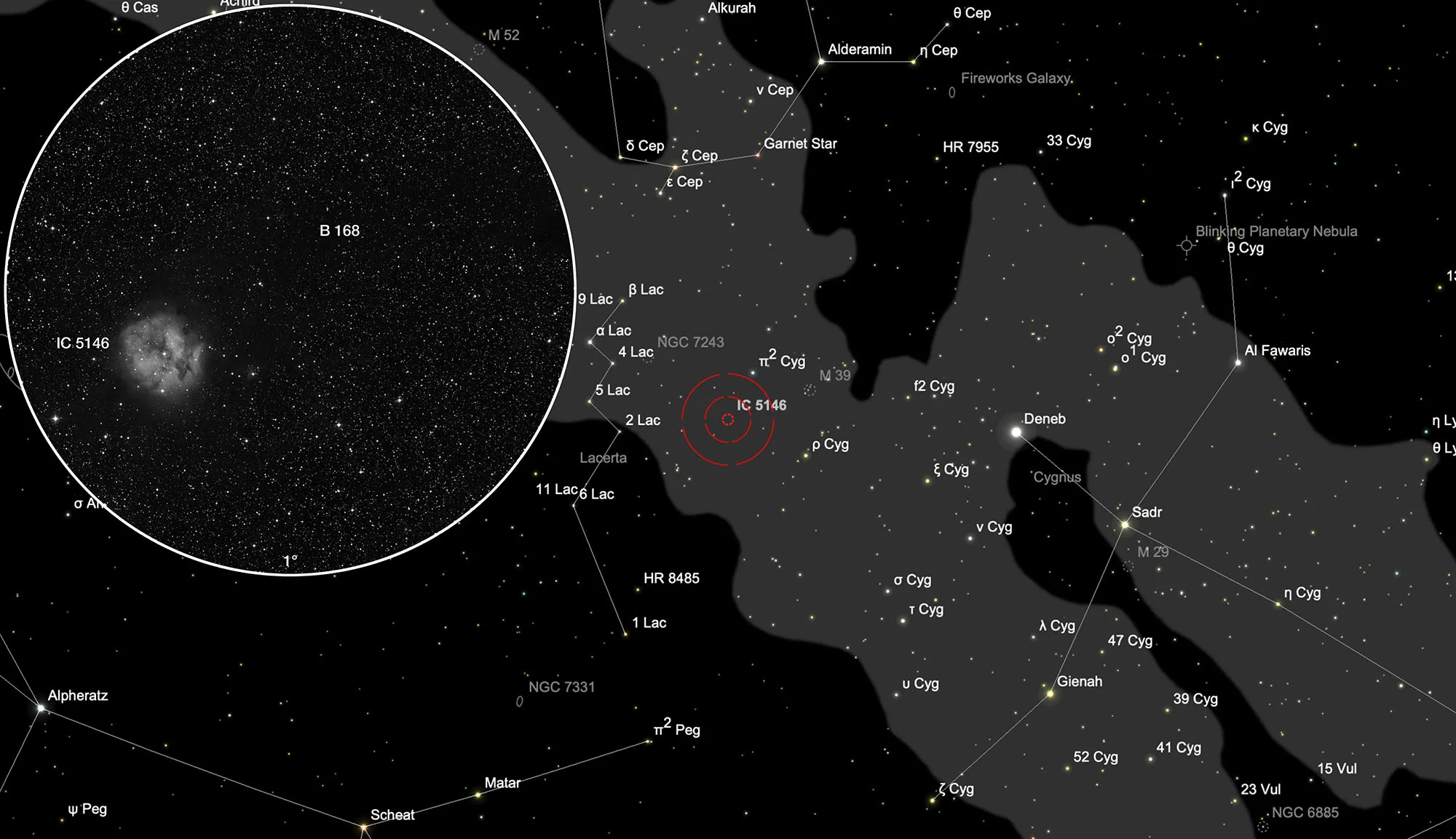Cocoon Nebula (IC 5146)
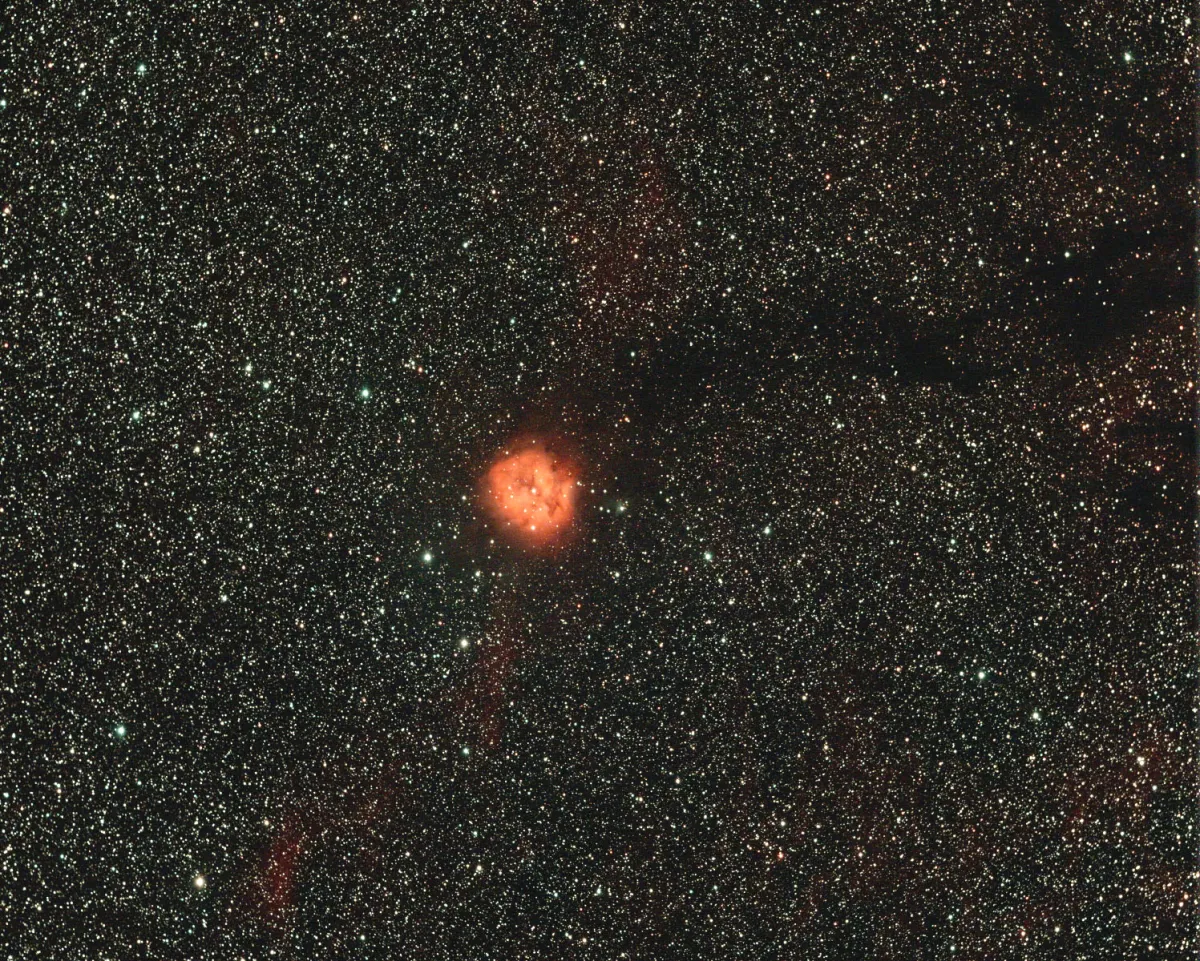
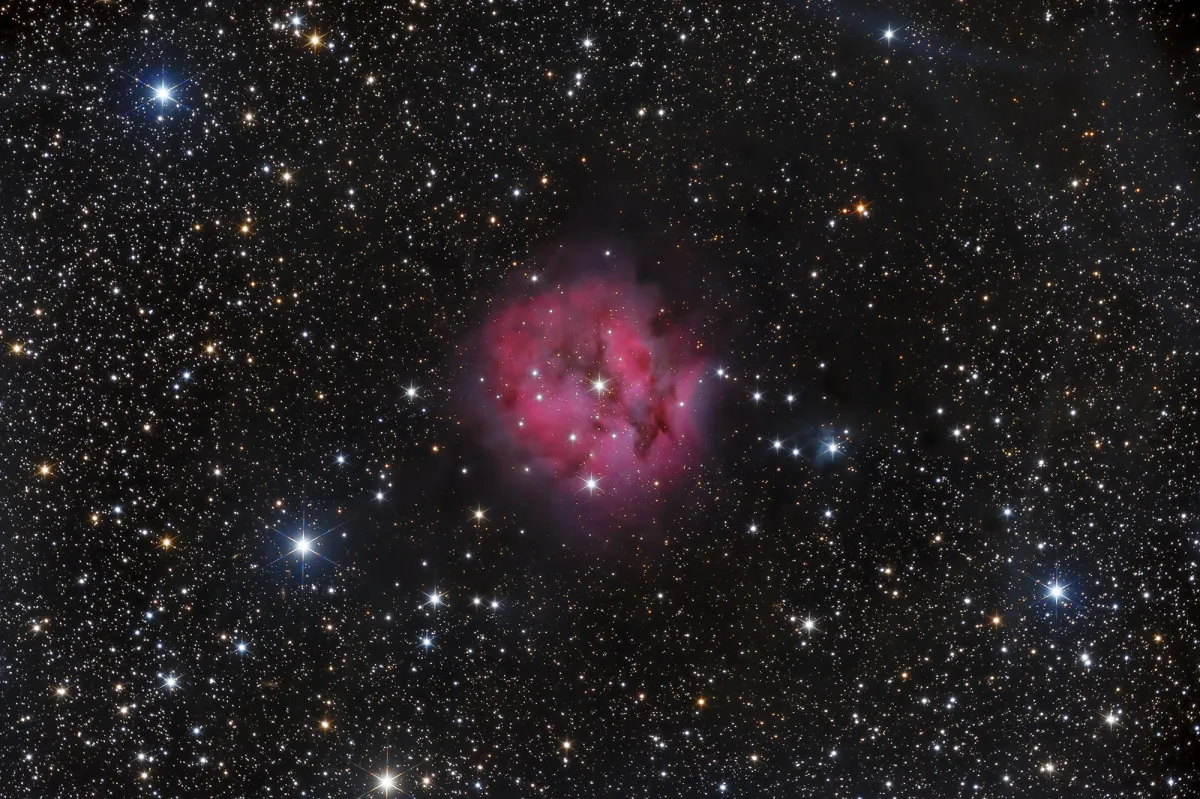
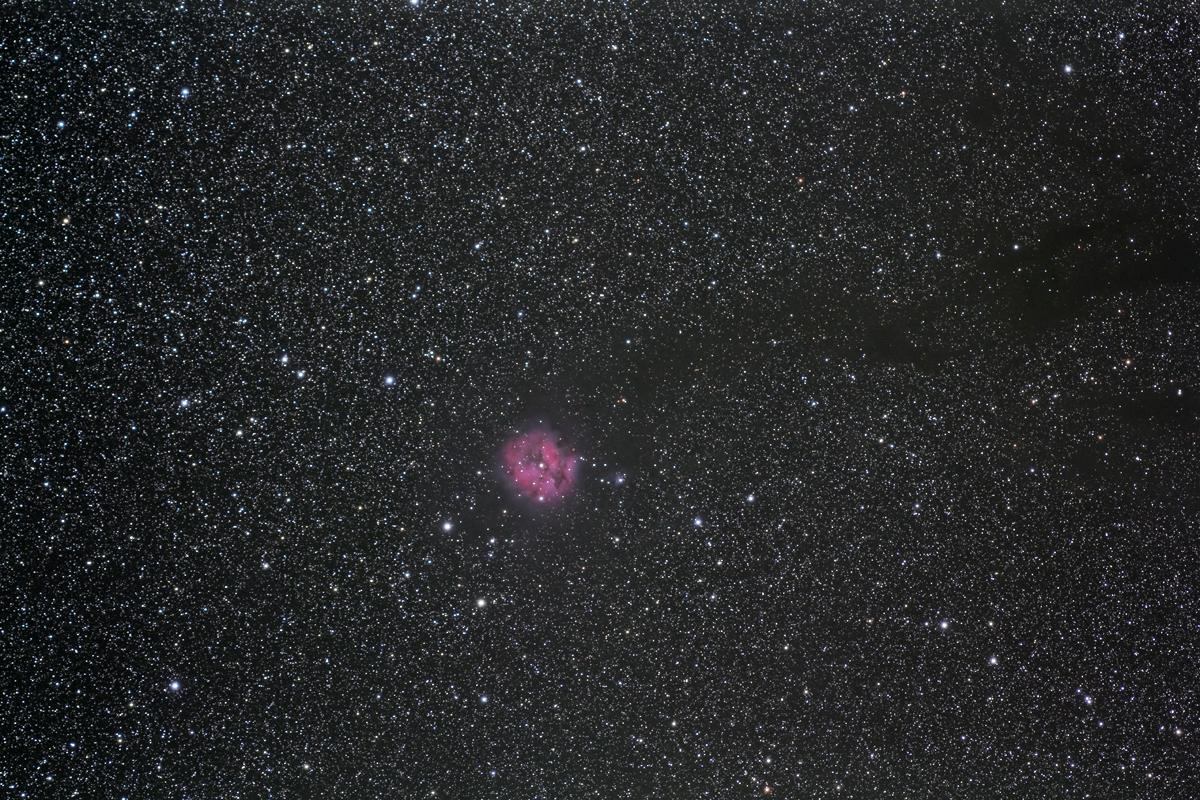
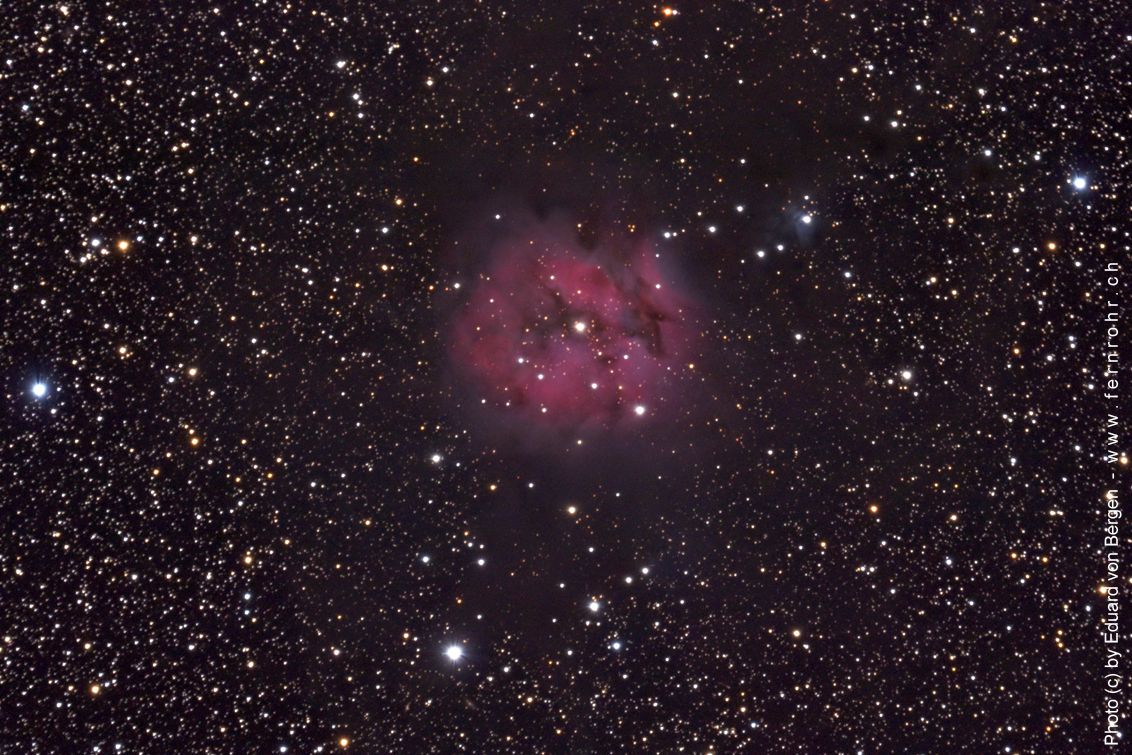
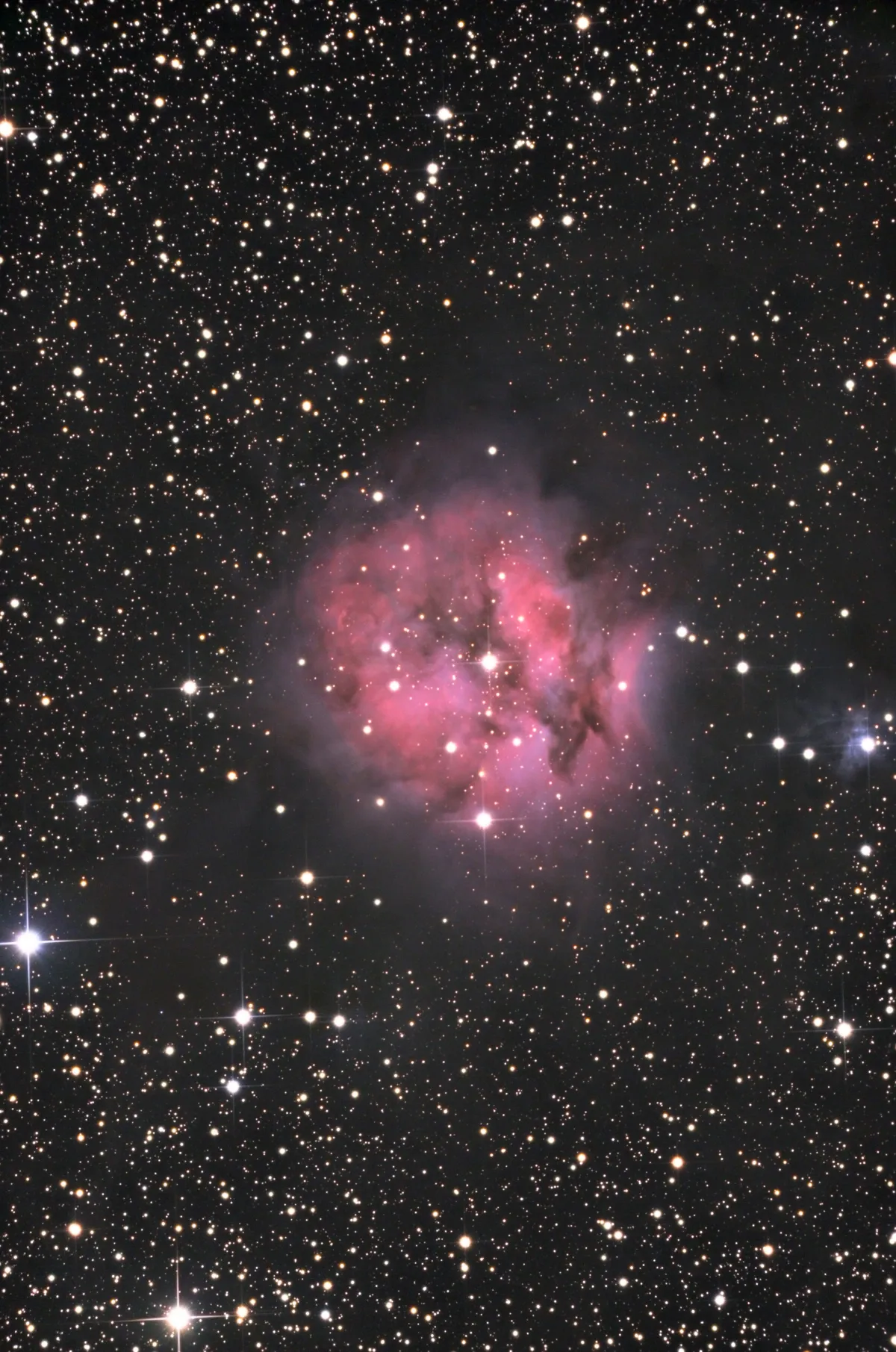
History
IC 5146 was discovered on 28th July 1894 by the German astronomer Max Wolf. It is an open star cluster, involved in a large galactic nebula consisting of emission nebulae, reflection nebulae and dark nebulae. The designation IC 5146 applies to the star cluster including the nebula. The nebula is also known as Sharpless 125 (Sh2-125) and the star cluster as Collinder 470. It was nicknamed Cocoon Nebula because of its appearance, which resembles a glowing insect cocoon in a dark cloud.
Physical Properties
The star cluster with the bright part of the nebula has an angular diameter of about twelve arc minutes. Distance measurements are quite inaccurate. They range from around 2500 to 6400 light years. The star cluster consists of two compact groups that orbit massive, bright stars. The brightest of these is a main sequence star of the spectral type B0 and is primarily responsible for the fact that the nebula shines. It is believed that the bright part of the nebula originated around 100'000 years ago. The two to three hundred hot, bright, young stars in the area, however, have an average age of around one million years, which suggests that star formation took place here in several episodes, which continues to this day. The blue areas of the nebula are caused by the reflection of the starlight on dust grains, while the reddish regions are caused by ionized hydrogen (mainly Hα), caused by the star's non-violet radiation.
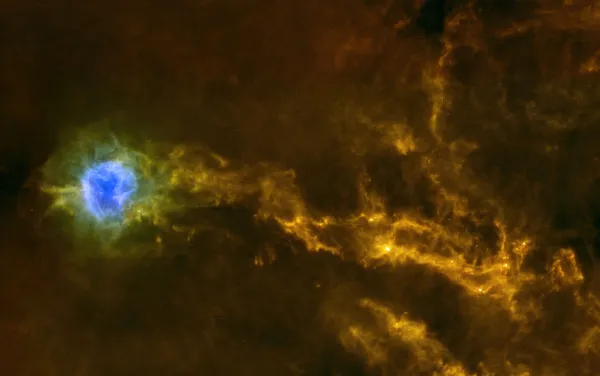
Around the light nebula lies the end of a dark nebula that extends far to the west Barnard 168 which makes it stand out clearly against the starry background of the Milky Way. The dark nebula appears on the infrared image of the ESA Herschel telescope in Fig. 4 brightly. Over 350 compact, starless knots have been discovered in the filaments of the dark nebula. About 45 of these are candidates for future star formation. [145, 196, 300]
| Designation | IC 5146 |
| Type | EN+OCL |
| Right Ascension (J2000.0) | 21h 53m 24.0s |
| Declination (J2000.0) | +47° 16' 00" |
| Diameter | 10 × 10 arcmin |
| Metric Distance | 0.780 kpc |
| Dreyer Description | pB, vL, iF, * 9.5 in M |
| Identification, Remarks | OCL 213; LBN 424; Cocoon nebula |
Finder Chart
IC 5146 is located in the constellation Cygnus towards Lacerta (Lizard). The best observation time is April to January. If you connect the imaginary line from α Lacertae (3.8 mag) - 4 Lacertae (4.6 mag) - ρ Cygni (3.9 mag), then IC 5146 lies on it approximately at the level of π Cygni (4.2 mag).
